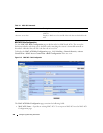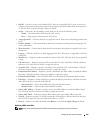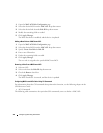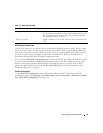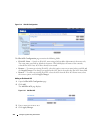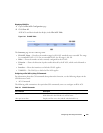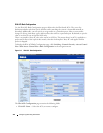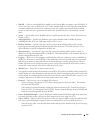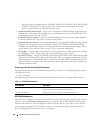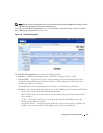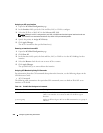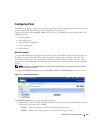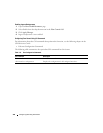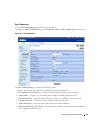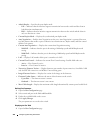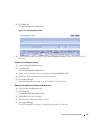
316 Configuring Switching Information
– Select one of the keyword from the list: DOMAIN, ECHO, FTP, FTPDATA, HTTP, SMTP, SNMP,
TELNET, TFTP, and WWW. Each of these values translates into its equivalent port number,
which is used as both the start and end of the port range.
•
Destination Prefix/Prefix Length
— Enter up to a 128-bit prefix combined with the prefix length to be
compared to a packet's destination IP address as a match criteria for the selected IPv6 ACL rule. The
prefix length can be in the range 0 to 128.
•
Destination L4 Port Number
— Specify a packet's destination layer 4 port number match condition
for the selected IPv6 ACL rule. This is an optional configuration.
•
Destination L4 Port Keyword
— Specify the destination layer 4 port match conditions for the selected
IPv6 ACL rule. The possible values are DOMAIN, ECHO, FTP, FTPDATA, HTTP, SMTP, SNMP,
TELNET, TFTP, and WWW. Each of these values translates into its equivalent port number, which is
used as both the start and end of the port range. This is an optional configuration.
•
Flow Label
— A 20-bit number that is unique to an IPv6 packet that is used by end stations to signify
QoS handling in routers. The flow label can specified within the range 0 to 1048575.
•
IPv6 DSCP Service
— Specify the IP DiffServ Code Point (DSCP) value, which is defined as the high-
order six bits of the Service Type octet in the IPv6 header. This is an optional configuration. Enter an
integer from 0 to 63. The IPv6 DSCP can be selected from one of the DSCP keywords in the menu. To
specify a DSCP by its numeric value, select the Other option in the menu, and a text box displays for
entering the numeric value.
Configuring an IPv6 ACL Rule by Using CLI Commands
For information about the CLI commands that perform this function, see the following chapter in the
CLI Reference Guide
:
• ACL Commands
The following table summarizes the equivalent CLI commands you use to configure IPv6 ACL rules.
ACL Bind Configuration
When an ACL is bound to an interface, all the rules that have been defined are applied to the selected
interface. Use the ACL Bind Configuration page to assign ACL lists to ACL Priorities and Interfaces.
From the Web interface, you can configure the ACL rule in the ingress or egress direction so that the
ACLs implement security rules for packets entering or exiting the port. You can apply ACLs to any
physical (including 10 Gb) interface, LAG, or routing port.
Table 7-9. IPv6 ACL Rule Command
CLI Command Description
ipv6 access-list Creates an IPv6 Access Control List (ACL) consisting of classification
fields defined for the IP header of an IPv6 frame.
show ipv6 access-lists Displays an IPv6 access list (and the rules defined for it).



